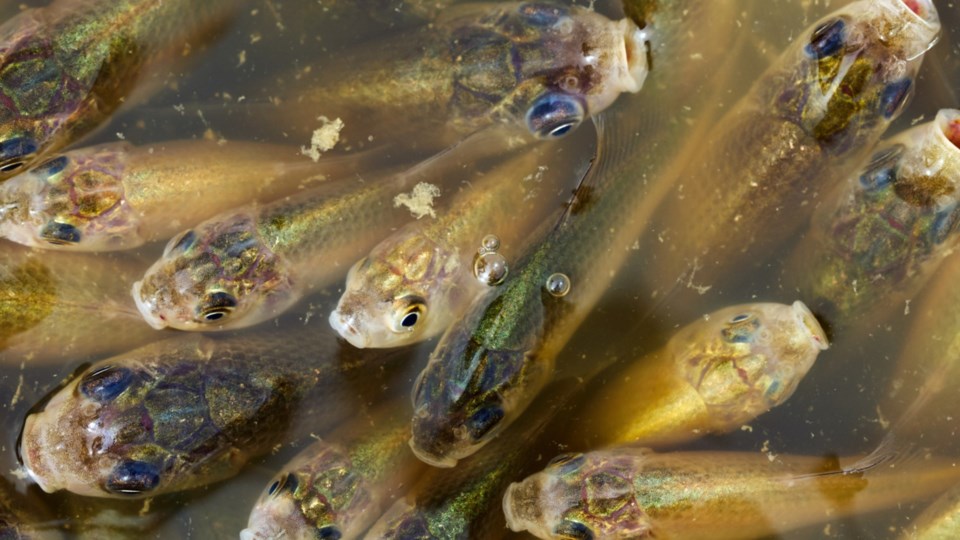NORTHEAST — They lurking the water, unwanted.
Aquatic invasive species pose a significant threat to native plants and wildlife. This week, May 8 to 12, is aquatic invasive species week, which aims to educate the public about the problems they can pose
Jeri Geiger, the province’s aquatic invasive species co-ordinator, highlighted two threats to Saskatchewan’s waterways: flowering rush and Prussian carp.
“The flowering rush, which is commonly used in water gardens, is present in the South Saskatchewan River from the Alberta border to Sask. Landing Provincial Park. A second population is present in Cutarm Reservoir and Cutarm Creek, near Esterhazy,” she said.
Flowering rush displaces native vegetation and alter water quality, reducing habitat for fish, wildlife, and native plants.
“Prussian carp, which look similar to goldfish without their orange colouring, are currently found in the South Saskatchewan River system in both Saskatchewan and Alberta,” Geiger said.
Prussian carp are extremely hardy, rapidly reproducing and can tolerate low oxygen levels and poor water quality where native fish cannot survive. They carry pathogens capable of infecting other fish species, and their destructive feeding habits reduces food and habitat for native fish.
Geiger said Prussian carp were found in 2022 in the North Saskatchewan River system in Alberta, but there haven’t been sightings in the Saskatchewan part of the river yet.
The province is keeping an eye on other threats that haven’t yet made it to Saskatchewan waters.
One of these threats are zebra mussels and their close relative, the quagga mussel. According to the U.S. Department of the Interior, the invasive freshwater mollusks from lake in Ukraine and southern Russia filter out algae that native species need for food and they attach to – and incapacitate – native mussels. They also clog intakes.
Another is spiny waterflea, a small, invasive zooplankton with a single black eye and a long, barbed tail spine. They outcompete native species for food, which can have cascading impacts to the entire food web.
Geiger said the risk remains posed by these species is very high as they are continuing to spread on improperly cleaned, drained, and dried watercraft and equipment in neighbouring jurisdictions.
When asked what the public can do to help prevent introducing invasive species to our waterways, Geinger gave a few tips
- Ensure that your watercraft and related equipment is completely cleaned, drained and dried after each use, and always remove your watercraft's drain plug for transport.
- Inspect your watercraft to ensure it is completely dry, and free of aquatic invasive species prior to launching (especially if you have used your watercraft and related equipment out-of-province).
- Aquarium pets and plants should never be released into the environment.
- Left over live bait should always be disposed of in the garbage, and never released into the environment.
- Locally sourced/purchased leeches and worms are the only live bait permitted for use in Saskatchewan. Report sightings of aquatic invasive species to the SK TIPP Line at 1-800-667-7561.
"Saskatchewan's many freshwater lakes, rivers and streams are critical to our daily lives, as they provide drinking water, irrigation, power generation and a number of recreational and commercial opportunities for the province," Environment Minister Dana Skoropad said. "Please help out by protecting our waters from aquatic invasive species. Clean, drain and dry your boats and any other equipment used in and around water."
More information on how to properly clean, drain and dry your equipment and prevent the spread of aquatic invasive species can be found at saskatchewan.ca/invasive-species.


-web.jpg;w=120;h=80;mode=crop)

